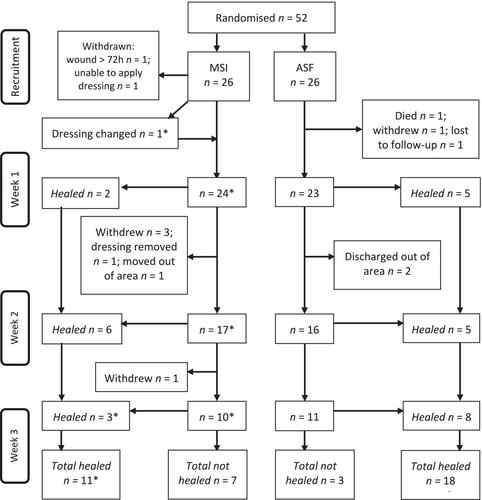Healing rate of hospital-acquired skin tears using adhesive silicone foam versus meshed silicone interface dressings: A prospective, randomized, non-inferiority pilot study
Abstract
Background
A skin tear is a traumatic wound that occurs in up to one in five hospitalized patients. Nursing care includes application of a dressing to create a moist wound healing environment.
Aim
To compare the effectiveness of two standard dressings (adhesive silicone foam vs. meshed silicone interface) to heal hospital-acquired skin tear.
Methods
An intention-to-treat pilot study was designed using a randomized, non-inferiority trial in an Australian tertiary hospital setting. Consenting participants (n = 52) had acquired a skin tear within the previous 24 h and had agreed to a 3-week follow-up. Data were collected between 2014 and 2020. The primary outcome measure was wound healing at 21 days.
Results
Baseline characteristics were similar in both arms. Per protocol, 86% of skin tears were fully healed at 3 weeks in the adhesive silicone foam group, compared to 59% in the meshed silicone interface group. Greater healing was observed across all skin tear categories in the adhesive silicone foam dressing group. In the intention-to-treat sample, healing was 69% and 42%, respectively.
Conclusions
Results suggest the adhesive silicone foam dressing may be superior, as it produced clinically significant healing of skin tears at 3 weeks compared to the meshed silicone interface dressing. Accounting for potential loss to follow-up, a sample of at least 103 participants per arm would be required to power a definitive study.


 求助内容:
求助内容: 应助结果提醒方式:
应助结果提醒方式:


